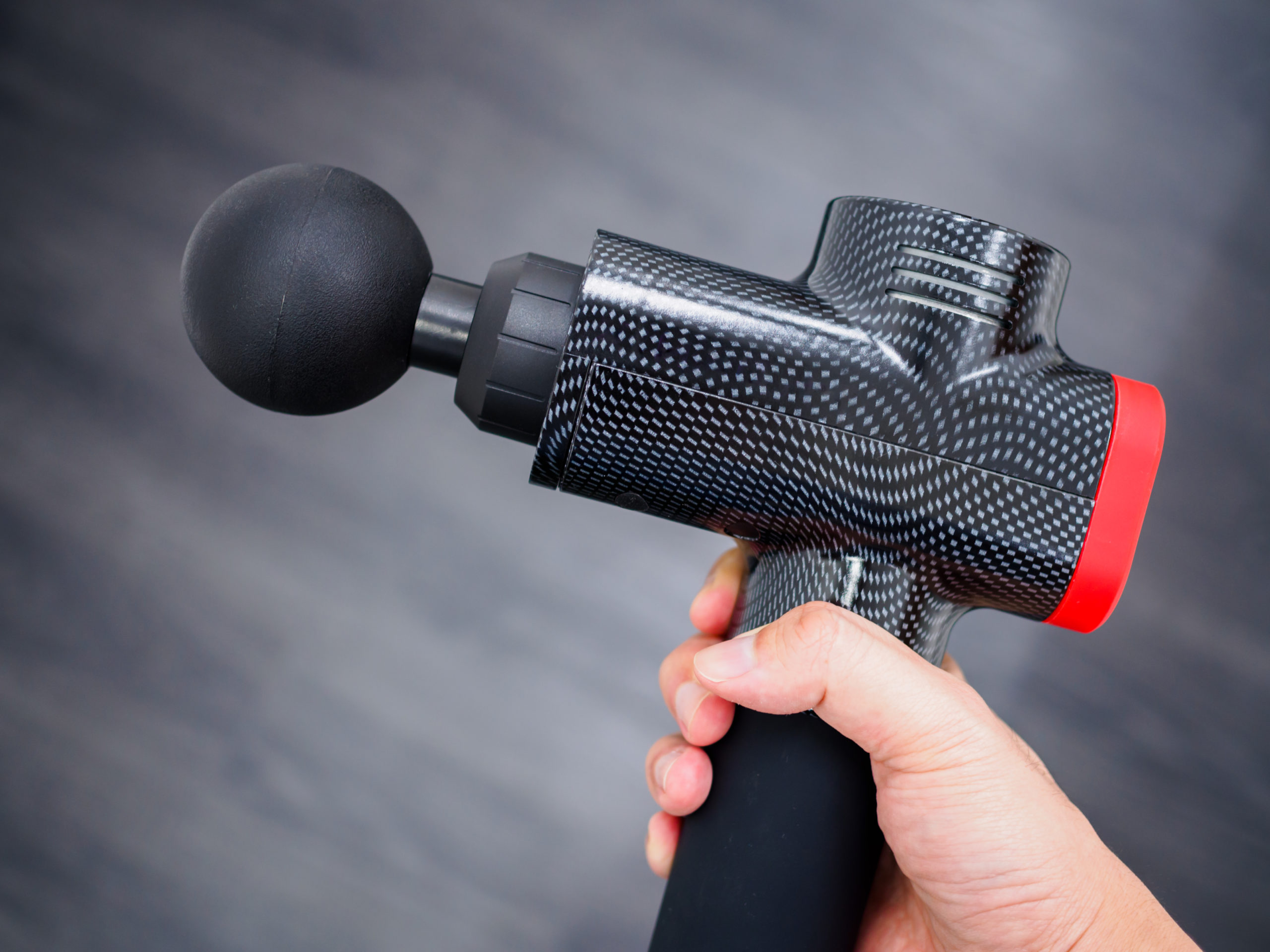These types of tools have been around for decades. Most therapists and doctors would agree that stimulating muscle tissue increases circulation, relieves tension, and ultimately reduces pain. Furthermore, studies have shown that myofascial release and trigger point therapy has multiple benefits.
But there’s a problem. Most average users don’t know how to operate the tool properly and do more damage than good. Therefore, it’s easier for massage gun marketers to rave about the hurt-so-good effect, rather than sharing the true science behind their products.
To better understand what a massage gun does to your body, let’s dive into the layers of tissue and muscle.

It Damages Your Skin
Your skin, or dermis, is the first layer of tissue protecting your internal structure. With any massage therapy tool or technique, the skin is the first layer to respond to the application. Just under the skin are lots of blood vessels and nerve endings. And although these nerve endings and blood vessels are protected, the protective layers of collagen and elastin fibers vary significantly with age, gender, and health.
As we move one layer deeper, we reach the subcutaneous fat. Resting just below your skin, fat acts as a cushion for your body. Depending on the area of the body, age, sex, and overall fitness, the thickness varies. The more fat you have, the less sensitivity you will feel from the massage gun jigsaw pounding.
Our next layer, the fascia, is what we are all trying to reach when we get a massage, use a foam roller, or turn on a massage gun–skeletal muscle. According to a John Hopkins study, Fascia is a thin casing of connective tissue that surrounds and holds every organ, blood vessel, bone, nerve fiber, and muscle in place.
When hammering into this area with a high-intensity motor, we can rupture blood vessels, create inflammation, and ultimately cause bruising. The goal of massage therapy is to increase blood flow that transports beneficial oxygen and nutrients to our muscles. When we shatter these pathways, we counteract the potential gains.
Effectively, when you push the massage gun into your muscle, the skin, fat, fascia, nerves, and blood vessels are having to resist hundreds of forceful up-and-down reps. When your body feels pain, the nerves are sending messages to your brain asking you to stop. You’re entering fight-or-flight mode, shutting down pain receptors to endure the trauma. When you finally release the trigger, you feel relieved. But this isn’t muscle tension relief. It’s the relief from your massage gun’s hammer and the soreness will be worse the next day.
Fight or Flight
When using a massage gun you want to be extra careful to avoid major arteries, nerves, lymphatic vessels and internal organs. Also, when your body tells you to stop, that means STOP!
At Garrow Wellness Center, we don’t buy into this hurts-so-good movement. Rather, we believe slow, measured, self-induced pressure (or slow/controlled pulses) are most beneficial for the muscular system.
Here are the harmful risks of using your massage gun:
- Rupturing blood vessels–when blood vessels burst you may see bruises and experience blood leakage into the muscle tissue.
- Stretched collagen and elastin fiber–the continuous rapid blows to your skin with the percussion massage gun can lead to saggy, stretched skin over time.
- Damaged muscle fiber–while muscle cells are durable by nature, they are not created to withstand continuous blows. Over time the pounding effect of the massage gun can damage the actin and myosin proteins and lead to further muscular contraction and less strength.
- Increased nerve sensitivity–under the pressure, rapid blows, and machine force of the percussion gun, the nerve endings in your skin transmit unwanted signals to your brain. The effects of these increased signals can potentially increase heart rate and high blood pressure.
- Increased muscle contractions–when your nerves fire fight-or-flight signals your muscles respond with unnecessary contractions. When we are attempting to relax a muscle and relieve tension, increased muscle contractions, especially while under outside pressure are counterproductive.
A massage gun may be a safe choice in skilled hands, but inexperienced users face too many risks. Incorrect or excessive use can create more pain and cause injury. Continuous pressure or vibration on the same spot can cause tissue damage and extreme soreness.
When to Seek Out a Physical Therapist for Pain
As always when beginning to use a new tool for muscle recovery, listen to your body. If you are unsure whether your pain is appropriate for the use of a massage gun, consult a physical therapist. While muscle soreness can be improved by the use of a massage gun, it is not always the solution for an injury or pain. If you notice abnormal aches and pains, you can schedule an assessment at Garrow Wellness Center.
